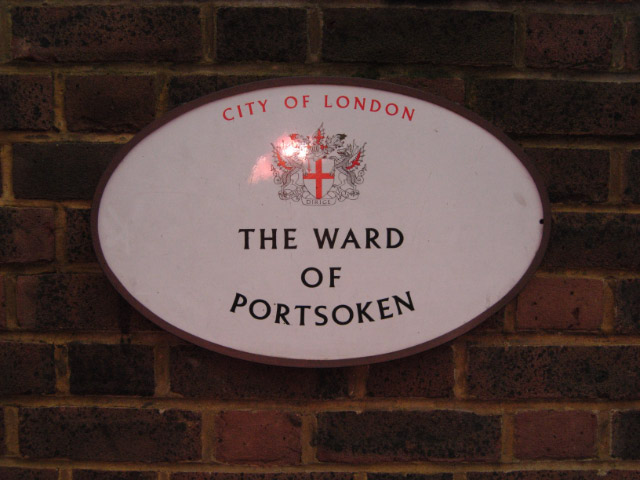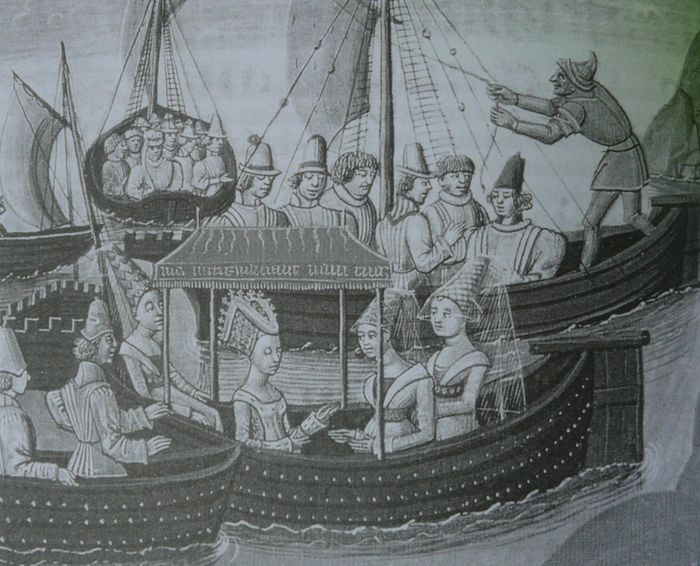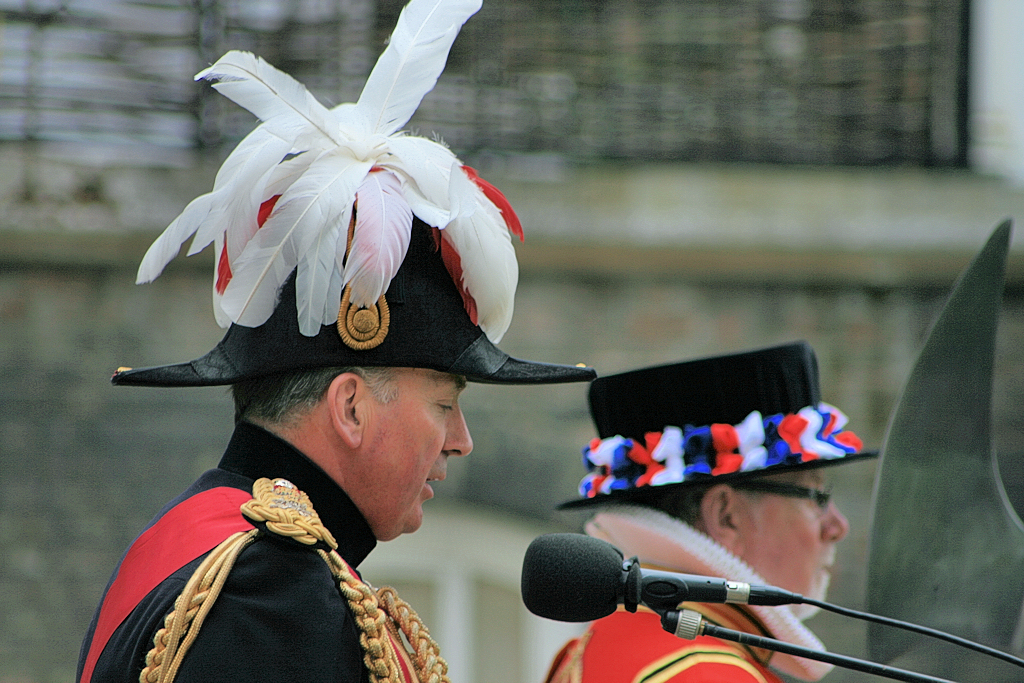|
East Smithfield
East Smithfield is a small locality in the London Borough of Tower Hamlets, east London, and also a short street, a part of the A1203 road. Once broader in scope, the name came to apply to the part of the ancient parish of St Botolph without Aldgate that was outside of the City of London. The old Royal Mint and the eastern part of St Katherine's Docks are located in the district. The street The street runs eastward from Tower Hill, with the name changing to The Highway after quarter of a mile. The street is on the route of both the London Marathon and the London Triathlon. At one time the street was known as ''Upper East Smithfield'' with the eastern part of St Katharine's Way (the part within East Smithfield) known as ''Lower East Smithfield''. History of the district Civil and ecclesiastical administration Portsoken Ward John Stow recounts the origin of the area from the ''Liber Trinitae'', where the Saxon King Edgar was petitioned by 13 knights to grant them the waste ... [...More Info...] [...Related Items...] OR: [Wikipedia] [Google] [Baidu] |
London Borough Of Tower Hamlets
The London Borough of Tower Hamlets is a London boroughs, borough in London, England. Situated on the north bank of the River Thames and immediately east of the City of London, the borough spans much of the traditional East End of London and includes much of the regenerated London Docklands area. The 2019 mid-year population for the borough is estimated at 324,745. The borough was formed in 1965 by merger of the former Metropolitan boroughs of the County of London, metropolitan boroughs of Metropolitan Borough of Stepney, Stepney, Metropolitan Borough of Poplar, Poplar, and Metropolitan Borough of Bethnal Green, Bethnal Green. 'Tower Hamlets' was originally an alternative name for the historic Tower division, Tower Division; the area of south-east Middlesex, focused on (but not limited to) the area of the modern borough, which owed military service to the Tower of London. The Tower of London itself is located in the borough, adjacent to its western boundary with the City of L ... [...More Info...] [...Related Items...] OR: [Wikipedia] [Google] [Baidu] |
Portsoken
Portsoken, traditionally referred to with the definite article as the Portsoken, is one of the City of London, England's 25 ancient wards, which are still used for local elections. Historically an extra-mural ward, lying east of the former London Wall, the area is sometimes considered to be part of the East End of London. The ward is about 5 hectares in area, and is mainly oriented north-south, with the central part informally known as ''Aldgate'' while to its north as ''Bishopsgate''. History John Stow's ''Survey of London'' records that the " soke" – in this context the right to extract fines as a source of income – (later "liberty") was granted in the time of Saxon king Edgar the Peaceful, east of Aldgate to a guild of knights, the '' Cnichtengild'', in exchange, essentially, for regular jousting. Norman kings confirmed these rights but later the land was voluntarily transferred to the Priory of the Holy Trinity by the descendants of the guild. In 1120 or 1121 (the e ... [...More Info...] [...Related Items...] OR: [Wikipedia] [Google] [Baidu] |
Philippa Of Hainault
Philippa of Hainault (sometimes spelled Hainaut; Middle French: ''Philippe de Hainaut''; 24 June 1310 (or 1315) – 15 August 1369) was List of English consorts, Queen of England as the wife and political adviser of King Edward III. She acted as regent in 1346,Strickland, Agnes. ''Lives of the Queens of England: From the Norman Conquest'' when her husband was away for the Hundred Years' War. Daughter of William I, Count of Hainaut and French princess Joan of Valois, Countess of Hainaut, Joan of Valois, Philippa was engaged to Edward, Prince of Wales, in 1326. Their marriage was celebrated in York Minster on 24 January 1328, some months after Edward's accession to the throne of England and Isabella of France's infamous invasion.Un parchemin daté du 15 August 1328 à Northampton, au sceau disparu, énonce qu'Edouard (III), roi d'Angleterre, confirme la fixation du douaire de son épouse Philippa de Hainaut. ''In, G. Wymans, " Inventaire analytique du chartrier de la Trésorerie ... [...More Info...] [...Related Items...] OR: [Wikipedia] [Google] [Baidu] |
Henry III Of England
Henry III (1 October 1207 – 16 November 1272), also known as Henry of Winchester, was King of England, Lord of Ireland, and Duke of Aquitaine from 1216 until his death in 1272. The son of John, King of England, King John and Isabella of Angoulême, Henry assumed the throne when he was only nine in the middle of the First Barons' War. Cardinal Guala Bicchieri declared the war against the rebel barons to be a religious crusade and Henry's forces, led by William Marshal, defeated the rebels at the battles of Battle of Lincoln (1217), Lincoln and Battle of Sandwich (1217), Sandwich in 1217. Henry promised to abide by the Magna Carta#Great Charter of 1225, Great Charter of 1225, a later version of the 1215 Magna Carta, which limited royal power and protected the rights of the major barons. Henry's early reign was dominated first by William Marshal, and after his death in 1219 by the magnate Hubert de Burgh. In 1230, the King attempted to reconquer the Angevin Empire, provinces of ... [...More Info...] [...Related Items...] OR: [Wikipedia] [Google] [Baidu] |
Eleanor Of Provence
Eleanor of Provence ( 1223 – 24/25 June 1291) was a Provence, Provençal noblewoman who became List of English royal consorts, Queen of England as the wife of King Henry III of England, Henry III from 1236 until his death in 1272. She served as regent of England during the absence of her spouse in France in 1253. Although Eleanor was completely devoted to her husband and staunchly defended him against the rebel Simon de Montfort, 6th Earl of Leicester, she was very unpopular among the Londoners. This was because she had brought many relatives with her to England in her retinue; these were known as "the Savoyards" (her mother was from Savoy), and, as Londoners saw it, these foreigners were given influential positions in the government and realm to lord over them. On one occasion, Eleanor's barge was attacked by angry Londoners who pelted her with stones, mud, pieces of paving, rotten eggs and vegetables. Eleanor had five children, including the future King Edward I of England. ... [...More Info...] [...Related Items...] OR: [Wikipedia] [Google] [Baidu] |
Matilda Of Boulogne
Matilda I of Boulogne ( – 3 May 1152) was Countess of Boulogne in her own right from 1125 and Queen of England from the accession of her husband, King Stephen, in 1135 until her death in 1152. She supported Stephen in his struggle for the English throne against their mutual cousin Empress Matilda. She played an unusually active role for a woman of the period when her husband was captured, and proved herself an effective general who managed to force the Empress to release Stephen. Under the agreement that settled the civil war, the Queen's children did not inherit the English throne but her three surviving children ruled Boulogne in turn as Eustace IV, William I, and Marie I. Background Matilda was born in Boulogne, France. Her father was Count Eustace III of Boulogne. Her mother, Mary, was the daughter of King Malcolm III of Scotland and Saint Margaret of Scotland. Through her maternal grandmother, Matilda was descended from the Anglo-Saxon kings of England. Coun ... [...More Info...] [...Related Items...] OR: [Wikipedia] [Google] [Baidu] |
St Katharine's By The Tower
The Royal Foundation of St Katharine is a religious charity based in the East End of London. The Foundation traces its origins back to the medieval church and monastic hospital St Katharine's by the Tower (full name ''Royal Hospital and Collegiate Church of St. Katharine by the Tower''), established in 1147, next to the Tower of London. The church, a royal peculiar, was the heart of the Precinct of St Katharine by the Tower, a small but densely populated district; a Liberty with extra-parochial status, and which later became a civil parish. Both the church and the district were destroyed in 1825 to make way for the new St Katharine Docks which took its name from the church and district it replaced. The institution itself survived the destruction associated with the construction of the dock, by transferring to a site near Regents Park, but it returned to the East End after World War II, using the site of Ratcliff's parish church, ''St James'', which had been destroyed by bombi ... [...More Info...] [...Related Items...] OR: [Wikipedia] [Google] [Baidu] |
Holy Trinity Priory
The Holy Trinity Priory, also known as Christchurch Aldgate, was a priory of Austin canons ( Black Canons) founded around 1108 by the English queen Matilda of Scotland near Aldgate in London.'Austin canons: Priory of Holy Trinity or Christchurch, Aldgate' ''A History of the County of London: Volume 1: London within the Bars, Westminster and Southwark'' (1909), pp. 465–475 Accessed 13 November 2007Burton ''Monastic and Religious Orders'' p. 46 History The English queen |
Constable Of The Tower
The Constable of the Tower is the most senior appointment at the Tower of London. In the Middle Ages a constable was the person in charge of a castle when the owner—the king or a nobleman—was not in residence. The Constable of the Tower had a unique importance as the person in charge of the principal fortress defending the capital city of England. Today the role of Constable is a ceremonial one and mainly involves taking part in traditional ceremonies within the Tower as well as being part of the community that lives within its perimeter. The Constable is also a trustee of Historic Royal Palaces and of the Royal Armouries. Under the '' King's Regulations for the Army'', the office of Constable is conferred upon a field marshal or a retired general officer for a five-year term. The Constable appointed in 2022 is General Sir Gordon Messenger. The Constable's ceremonial deputy is the Lieutenant of the Tower of London, currently Lieutenant General Sir George Norton; this off ... [...More Info...] [...Related Items...] OR: [Wikipedia] [Google] [Baidu] |
Alderman
An alderman is a member of a Municipal government, municipal assembly or council in many jurisdictions founded upon English law with similar officials existing in the Netherlands (wethouder) and Belgium (schepen). The term may be titular, denoting a high-ranking member of a borough or county council, a council member chosen by the elected members themselves rather than by Direct election, popular vote, or a council member elected by voters. Etymology The title is derived from the Old English title of ''ealdorman'', which literally means "elder person", and which was used by the chief nobles presiding over shires. Similar titles exist in other Germanic languages, such as ' in Swedish language, Swedish, ' in Norwegian language, Norwegian, ' in Danish language, Danish and Low German, ' in West Frisian language, West Frisian, ' in Dutch language, Dutch, and ' in German language, German. Finnish language, Finnish also has ', which was borrowed from Swedish. All of these words mean "eld ... [...More Info...] [...Related Items...] OR: [Wikipedia] [Google] [Baidu] |
Matilda Of Scotland
Matilda of Scotland (originally christened Edith, 1080 – 1 May 1118), also known as Good Queen Maud, was Queen consort of England and Duchess of Normandy as the first wife of King Henry I. She acted as regent of England on several occasions during Henry's absences: in 1104, 1107, 1108, and 1111. Daughter of King Malcolm III of Scotland and the Anglo-Saxon princess Margaret of Wessex, Matilda was educated at a convent in southern England, where her aunt Christina was abbess and forced her to wear a veil. In 1093, Matilda was engaged to an English nobleman until her father and her brother Edward were killed in the Battle of Alnwick in 1093. Her uncle Donald III seized the throne of Scotland, triggering a messy succession conflict. England opposed King Donald and supported first her half-brother Duncan II as king of Scotland, and after his death, her brother Edgar, who assumed the throne in 1097. Henry I succeeded his brother William Rufus as king of England in 1100 and q ... [...More Info...] [...Related Items...] OR: [Wikipedia] [Google] [Baidu] |
Liberty (division)
A liberty was an Kingdom of England, English geographic unit originating in the Middle Ages, traditionally defined as an area in which Jura regalia, regalian right was revoked and where the land was held by a mesne lord (i.e., an area in which rights reserved to the king had been devolution, devolved into private hands). It later became a unit of History of local government in England, local government administration. Liberties were areas of widely variable extent which were independent of the usual system of Hundred (country subdivision), hundreds and boroughs for a number of different reasons, usually to do with peculiarities of land tenure, tenure. Because of their tenurial rather than geographical origin, the areas covered by liberties could either be widely scattered across a county or limited to an area smaller than a single parish: an example of the former is Fordington (liberty), Fordington Liberty, and of the latter, the Waybayouse Liberty, Liberty of Waybayouse, both in D ... [...More Info...] [...Related Items...] OR: [Wikipedia] [Google] [Baidu] |









